| Date | Text | |
|---|---|---|
30 Nov 1935
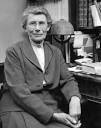
Inge Lehmann |
Inge Lehmann (earth sciences) Inge Lehmann argues that the Earth's molten interior has a solid inner core. |
|
30 Nov 1935

Cornelis Simon Meijer |
Cornelis Simon Meijer (mathematics) Dutch mathematician Cornelis Simon Meijer introduces the Meijer G-function. |
|
30 Nov 1935

António Egas Moniz |
António Egas Moniz (medicine) António Egas Moniz publishes his first report of performing a prefrontal leukotomy on a human patient. |
|
30 Nov 1935
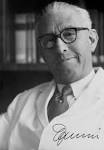
Guido Fanconi |
Guido Fanconi (medicine) Guido Fanconi describes a connection between celiac disease, cystic fibrosis of the pancreas and bronchiectasis. |
|
30 Nov 1935
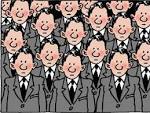
conformity |
conformity (psychology) Sherif's experiment on conformity. |
|
30 Nov 1935
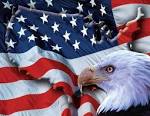
American |
American (zoology) American explorer Ruth Harkness brings the first live giant panda, a cub named Su Lin, out of China. |
|
30 Nov 1935
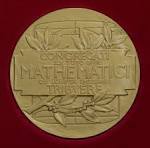
Fields Prize in Mathematics |
Fields Prize in Mathematics (awards) Fields Prize in Mathematics (first award): Lars Ahlfors and Jesse Douglas |
|
10 Jan 1936
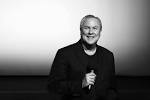
Robert Wilson |
birth Robert Wilson Robert Wilson, American physicist and radio astronomer. |
|
04 Feb 1936
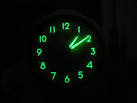
Radium |
Radium (chemistry) Radium E. becomes the first radioactive element to be made synthetically. |
|
23 Feb 1936

Rocket air mail |
Rocket air mail In 1936, the first U.S. rocket air mail flight was made at Greenwood Lake, N.Y. in the Gloria. This rocket was 11-ft long with a 15-ft wing spread, fueled by alcohol and liquid oxygen. It carried 4,323 letters and 1,826 postcards. Each cover was franked with special rocket stamps in addition to the regular postage stamps. The flight was sponsored by Frido W. Kessler. The rocket inventors were Willey Ley, Louis Goodman and Hugh Franklin Pierce. |
|
27 Feb 1936
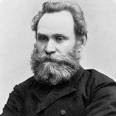
Ivan Petrovich Pavlov |
death Ivan Petrovich Pavlov Died 27 Feb 1936 at age 86 (born 27 Sep 1849). Russian physiologist, who was awarded the 1904 Nobel Prize in Physiology or Medicine. He pioneered the investigation what he named the “conditioned reflex.” In the experiment which made him famous, he trained a hungry dog to associate the sound of a bell with receiving food. Thereafter, the dog would salivate on hearing the bell alone. This work began as merely a study in digestion, with a series of experiments on dogs to investigate how digestive secretions are regulated. He identified three stimuli that caused dogs to begin to salivate: seeing, smelling, or tasting food. He realized, digestion is partly controlled by sensory stimuli. In 1903, Pavlov published his results on this learned— “conditioned reflex,” (as opposed to an innate reflex, like a reaction to pain). He worked actively in the lab until his death at age 87. |
|
27 Feb 1936
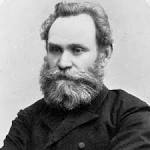
Ivan Pavlov |
death Ivan Pavlov Ivan Pavlov (born 1849), Russian physiologist. |
|
28 Feb 1936
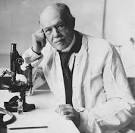
Charles-Jules-Henri Nicolle |
death Charles-Jules-Henri Nicolle Died 28 Feb 1936 at age 69 (born 21 Sep 1866). French physician and bacteriologist who received the 1928 Nobel Prize for Physiology or Medicine for his discovery (1909) that typhus is transmitted by the body louse. When appointed as Director of the Pasteur Institute at Tunis, Africa, young Dr. Charles Nicolle was immediately brought into contact with the scientific and practical problems that typhus epidemics had created in this country. His solution began with the simple observation that whilst typhus patients continued to spread infection prior to entering the hospital, they were no longer a danger upon being bathed and in new clothing. This fact pointed to a parasite which lives on the patient's body and in his clothing. He subsequently identified the carrier to be the body louse. |
|
14 Mar 1936

John Scott Haldane |
death John Scott Haldane Died 14 Mar 1936 at age 75 (born 3 May 1860). Scottish physiologist and philosopher of science whose extensive work on human respiration included the effects of pulmonary diseases and the physiology of the blood. Early in his career he studied the air in sewers for microorganisms, which he found rather limited. Haldane was known for experimentation on himself to find the amount of carbon dioxide in the blood was a stimulus for the respiratory centre of the brain. He reported on investigations of the effects of carbon monoxide from mine fires and explosions (1896). For the safety of deep-sea divers, he built on Paul Bert's work on the bends and produced the first staged decompression tables (1907). He also devised a decompression apparatus. He invented a gas mask used in WW I. |
|
24 Mar 1936
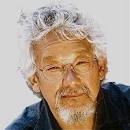
David Suzuki |
birth David Suzuki David Suzuki, Canadian geneticist and populariser of science. |
|
08 Apr 1936

Robert Bárány |
death Robert Bárány Robert Bárány (born 1876), Nobel Prize winner in medicine. |
|
17 Apr 1936

Meemann Chang |
birth Meemann Chang Meemann Chang, Chinese paleontologist. |
|
27 Apr 1936
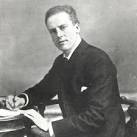
Karl Pearson |
death Karl Pearson Karl Pearson (born 1857), English mathematician. |
|
10 May 1936

Vladimir Germanovich Bogoraz |
death Vladimir Germanovich Bogoraz Died 10 May 1936 at age 71 (born 27 Apr 1865). Russian anthropologist whose study of the Chukchi people of northeastern Siberia ranks among the classic works of ethnography. He published grammars, a dictionary, textbooks for Chukchi children, folklore collections, ethnographic and historical studies, and a novel about the Chukchis. |
|
28 May 1936
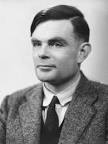
Alan Turing |
Alan Turing (computer science) Alan Turing submits "On Computable Numbers" to the London Mathematical Society for publication, introducing the concept of the theoretical "a[utomatic]-machine" or Turing machine. Its formal publication is on November 12. |
|
26 Jun 1936

Focke-Wulf Fw 61 |
Focke-Wulf Fw 61 (technology) Focke-Wulf Fw 61, the first fully controllable helicopter, makes its first flight. |
|
07 Jul 1936

Phillips-head screw |
Phillips-head screw In 1936, several U.S. patents were issued for the Phillips-head screw and screwdriver to its inventor, Henry F. Phillips (Nos. 2,046,343, 2,046,837 -40). They describe a fastening system involving a shallow cruciform recess and a matching driver with a tapering tip that conveniently self-centers in the screw head. Phillips founded the Phillips Screw Company to license his patents. After three years of rejection, he finally persuaded the American Screw Company to spend $500,000 developing a manufacturing process and manufacture the screws. General Motors was convinced to use the screws on its 1936 Cadillac. By 1940 virtually every American automaker had switched to Phillips screws. |
|
15 Jul 1936

Richard Dixon Oldham |
death Richard Dixon Oldham Died 15 Jul 1936 at age 77 (born 31 Jul 1858). Irish geologist and seismologist who discovered evidence for the existence of the Earth's liquid core (1906). In studying seismograms of great 1897 Indian Earthquake he identified P (primary) and S (secondary) waves. It is interesting that he did not get a clue to the presence of the core from the S waves, which are actually incapable of being transmitted through the liquid of the outer core. (The liquid core does not transmit the shear wave energy released during an earthquake.) Rather he noted the existence of a shadow zone in which P waves from an earthquake in the opposite hemisphere of the earth failed to appear. |
|
01 Aug 1936

W. D. Hamilton |
birth W. D. Hamilton W. D. Hamilton (died 2000), English evolutionary biologist, widely recognised as one of the greatest evolutionary theorists of the 20th century. |
|
07 Sep 1936

thylacine |
thylacine (zoology) Death of the last recorded thylacine, in Hobart Zoo. |
|
17 Sep 1936

Gerald Guralnik |
birth Gerald Guralnik Gerald Guralnik, American physicist most famous for his co-discovery of the Higgs mechanism and Higgs boson. |
|
02 Nov 1936

British Broadcasting Corporation |
British Broadcasting Corporation (technology) The world's first regular daily high-definition (at this time defined as at least 200 lines) television broadcast service is begun by the British Broadcasting Corporation from Alexandra Palace in London (following test transmissions since August). The service initially alternates on a weekly basis between John Logie Baird's 240-line electromechanical system and the Marconi-EMI all-electronic 405-line television system. |
|
19 Nov 1936

Yuan T. Lee |
birth Yuan T. Lee Born 19 Nov 1936. Taiwanese-American chemist who shared (with Dudley R. Herschbach and John C. Polanyi) the Nobel Prize for Chemistry in 1986 for his role in the development of chemical-reaction dynamics. As a postdoctoral researcher, Lee experimented with and further developed Herschbach's invention of the “crossed molecular beam technique”. This studied reactions between molecules at low pressures by letting beams of molecules and/or atoms meet at one point in space. Lee extended Herschbach's technique, introducing mass spectroscopy to identify the products resulting from the reactions of oxygen and fluorine atoms with complex organic compounds. |
|
30 Nov 1936
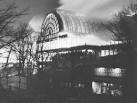
Crystal Palace fire |
Crystal Palace fire In 1936, London's famed Crystal Palace, constructed for the International Exhibition of 1851, was destroyed in the most spectacular fire seen in Britain for many years. It started about 8 pm and spread with such amazing rapidity that within half an hour the great building was ablaze from end to end. Flames rose 300-ft despite the efforts of 90 engines and 500 firemen. Only the two towers escaped destruction. When built, constructed mainly of glass and iron, it was nicknamed "The Crystal Palace" by Punch magazine. Within the Crystal Palace was a large concert hall which could accommodate audiences of at least 4000 people, and had its own resident orchestra, The Crystal Palace Orchestral Society. Regular concerts were held there, until the palace was destroyed by fire. |
|
22 Dec 1936

James Burke |
birth James Burke Born 22 Dec 1936. Northern Irish science writer and historian. |
|
23 Dec 1936

nerve agent |
nerve agent (chemistry) The first nerve agent, Tabun, is discovered (accidentally) by a research team headed by Dr Gerhard Schrader of IG Farben in Germany. |